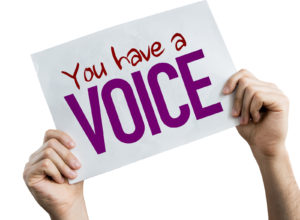Communication in the workplace is everything. And everything is communication.
Here are few ideas on how to improve the effectiveness of communication in your workplace:
Speak Up About What’s Bugging You? Brainstorm Everyone’s Communication Pet Peeves
Start by taking time with your team to simply brainstorm everyone’s pet peeves. Don’t limit how you define communication, keep the question open-ended. When I do this simple exercise in my workshops what usually comes out loud and clear are two things:
- Everyone has a LOT of pet peeves that no one has ever bothered to mention before
- Most of the pet peeves (I’d say 80-90%) are trivial things, such as people leaving too long a message on their voice mail, or unclear subject lines in e-mail messages that could easily be resolved with a little awareness. (Hence the need for an exercise such as this!)
Remind Everyone to take their Talk for a Walk
When you consider the old phrase, “Actions speak louder than words,” then you really are reminded that EVERYTHING you do (and don’t do) is communicating a message.
Talk is cheap. Actions speak volumes.
So when thinking about how effective your communication is in the workplace, start by considering what your actions are saying to the people around you, especially if you are in a position of leadership.
And talk about your workplace values, but dig deeply. Have the conversation about what your values actually mean in terms of everyone’s behaviors and attitudes.
People Aren’t Mind Readers
Never assume people know what you’re thinking or how you are feeling. And don’t assume they already know “this.”
Remember, effective communication is an investment. Yes, it takes up more time and energy to communicate to the other human beings on your team, but ultimately it’s a time saver.
It’s Not Just What You Say … but HOW You Say Things that Matters
According to a Harvard Business study, 71% of workplace conflicts are based on HOW things are said which means you can’t just be thinking about what needs to be communicated, but how you are going to say things effectively.
For More Effective Communication…Listen Up!
Effective leaders, effective team members and effective sales people all listen more than they talk.
Tell Your Face You’re Happy to Be Here
We are primarily a visual animal, so always be aware of what your body language is saying to others.
There is a reason that even some phone operators get training in body language–because it can affect our tone of voice, confidence level, and ultimately how we come across.
Now your arms folded around your stomach might just mean that you are cold, or you are self-conscious about the extra pounds you recently packed on, but the people around you might think that you are being close minded or negative, so think about the hidden messages you may be inadvertently transmitting.
And especially be aware of what your face is saying. We have literally hundreds of different facial expressions (if not thousands) available to us, so use them!
Show that you are listening to others with your eyes! Smile to show people you are awake and alive and interested in what they have to say. Smiling not only boosts your mood from the outside in, it is also the facial expression most visible from farthest away.
Give yourself this basic goal: try and see how many people you can get to smile back at you, just by putting your best face forward.
Are You Tone Deaf or Tone Aware?
If you own a dog, then you know how important your tone of voice is already. Just try saying the words “good dog” in different tones (angry vs. happy, soft vs. loud, fast vs. slow) and watch the  different reactions you get!
different reactions you get!
Think about what your tone of voice might be communicating. The pacing, pausing, volume, and pitch all affect how you are perceived. A rising pitch—the way children often speak, as though every statement is a question—can make you come across as insecure about what you are saying, whereas a falling pitch denotes confidence.
And what about the overall level of energy in your voice? Whether you are speaking on the phone or faced-to-face, adding some energy into how you speak makes a huge difference in how others perceive you.
And, finally, remember that variety is not only the spice of life, it’s also the spice that makes your tone of voice come across as more interesting and engaging.
Do You Need to Go to an ESL Course?
It seems to me a lot of English-speaking leaders and managers these days need to take an English as a second language course, because although they’re speaking English, most of the people around them don’t have the foggiest clue what they are saying!
Remember the importance of simply using plain language in your workplace communication. I’m not talking about “dumbing down” your language, but we need to use the same language we use at home with our spouses and kids. And dogs! Jargon speak is a surefire way of getting everyone’s eyes to glaze over, and study after study has shown that a high use of jargon corresponds to low morale and higher distrust in the workplace!
So be ruthless. Do away with all those annoying acronyms and meaningless phrases! Brainstorm everyone’s most annoying buzzword phrases, play jargon bingo in your meetings to raise awareness of the need for simple-speak, and use a jargon jar to penalize people for using tired clichés–every buzzword means a quarter into the jargon jar that goes to your social committee or favorite charity.
Talk About the Elephant
An ideal way to create more conflict and stress at work is by ignoring the proverbial elephant in the room.
Avoiding conflict creates more conflict.
Avoiding stressful conversations creates more stress.
Avoiding conflict might make for superficially effective meetings and a “nice” place to work, but it also creates havoc in the long run, allows complacency to take a firm hold and creates an environment where potentially god-awful—even dangerous ideas—are allowed to thrive unchecked.
This is why truly inspiring workplaces embrace conflict, rather than shy away from it. And it’s why they invest in open and honest and real communication to help make sure that everyone is comfortable disagreeing with each other—without being disagreeable!
Context is King
Do you need to have a difficult conversation? Then consider the context: the location, the time of day, what just happened before, and what’s going to happen afterwards all will potentially impact how well the conversation goes.
Ask and Ye Shall Receive
Asking questions is one of the most important things we can do at work. Questions generate deeper discussion, spark creative thinking, clarify misunderstandings, and, when you ask people for their opinion in genuine ways, lets people know that you respect their wisdom and experience.
In fact questions are so vital to the success of a great workplace, that I’ve created the handy dandy e-book “Inspiring Questions for Inspiring Workplaces.” Check it out at: http://store.mikekerr.com/e-books/inspiring-questions-for-inspiring-workplaces/
Tell Your Stories
Storytelling is the oldest and most powerful form of communication there is. After all, when you go home on a Friday night, do you ever fire up the PowerPoint and start sharing pie charts and jargon speak with your friends and family? No! You tell stories!
Any message you need to communicate effectively at work can be turned into a story with a little creative thought. And by turning your message or idea into a story, you help connect emotion with logic, you make the ideas more memorable and you keep people interested and awake!
There are two levels of storytelling to consider. The smaller stories—like how Bob was a customer service hero last week because of what he did—and the larger epic stories that employees need to be part of as well.
By epic stories, I mean that story of how your company came to be and why, the mythology that surrounds some of your founders, the historical context of your organization and the epic tale that you are still writing today—where do you see your organization twenty years from now?
Death by a Thousand Meetings
Tired of boring, ineffective meetings being held in a place called the BORED-room?
Here’s a shocker: meetings really can be fun AND effective! So make sure your meetings aren’t sucking the souls out of everyone. Do the basics—send out agendas in a timely manner, take proper minutes, only invite folks who need to be there, start and end on time … you know the drill.
And, then go one step further. Make your meetings fun and creative! Make them a place where people actually want to show up and participate! Make them a place where ideas thrive instead of a place where ideas go to die!
Stand Out from the Herd to Be Heard 
Consider the need to stand out from the herd to be heard over the din. Whether you are communicating with your customers or your fellow employees, being boring and being “corporate” will get you nowhere fast.
So don’t shy away from using humor to make a point. Get creative to stand out from the heard. Be more human. Inject personality into everything you communicate. Make it fun. Make it edgy sometimes.
Above all else, whether you’re communicating by phone, e-mail, or in person at a meeting, keep it real!
Michael Kerr is a Canadian Hall of Fame Speaker, highly in-demand international keynote speaker, and the creator of the Culture Leadership Online Academy. Michael is also the author of 8 books, including: The Humor Advantage: Why Some Businesses Are Laughing All the Way to the Bank; Hire, Inspire, and Fuel Their Fire; and The Jerk-Free Workplace: How You Can Take the Lead to Create a Happier, More Inspiring Workplace. www.MikeKerr.com




